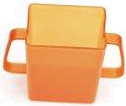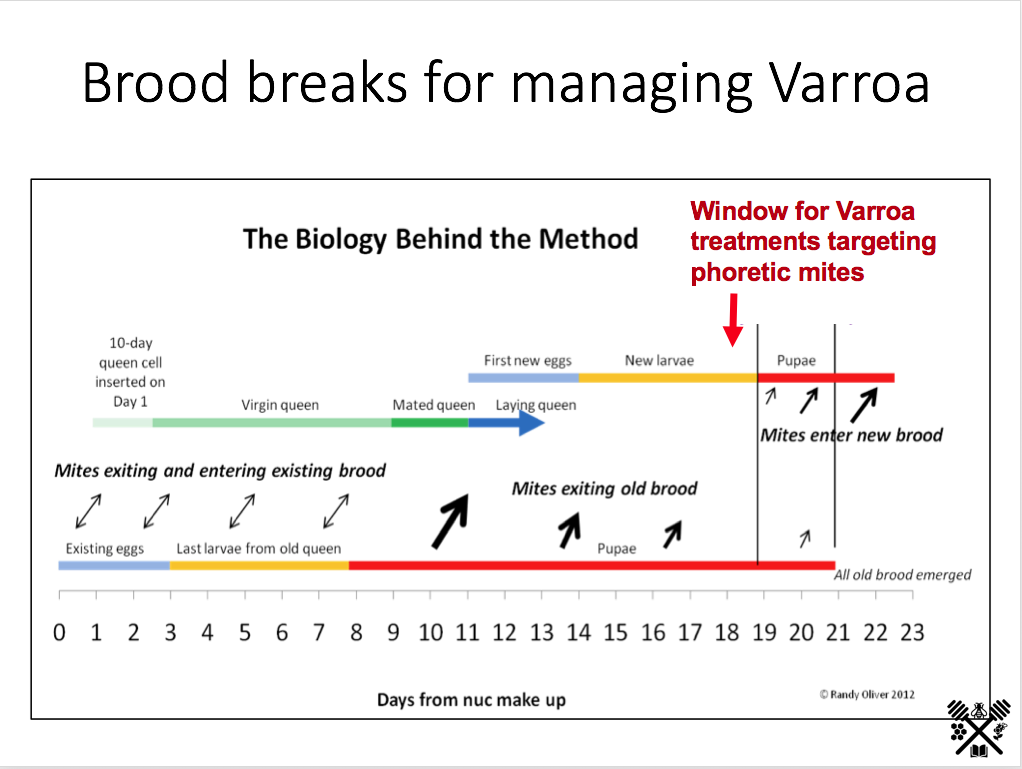Equipment Needed:
- Varroa sample jar with ⅛” hardware cloth (metal mesh) lid
- Powdered Sugar
- Plastic container with white bottom
- Water
- Sample cup to collect bees with a mark at 1/2 cup (square juice box holders work great)

How to sample:
- Open up the hive, and look for a frame with older brood, open and closed cells, and enough bees covering the frame. (Note: Make sure the queen is not on the frame!)
- Tilt the frame over the beehive so falling bees will land back into the hive. To sample bees, gently run edge of the cup along the backs of the bees in a DOWNWARD motion. The bees should fall into the cup without damage to the bee or the comb. (Note: Do not sample up the frame because bees will cling on, get injured, and or upset).
- Gently tap the bottom of the sample cup to keep the bees in and do several passes until you have enough bees to fill the 1/2 cup mark. Once you have the right amount of bees, dump them into the mason jar and seal the lid on. (Note: 1/2 cup of bees =approximately 300 bees)
- Take a heaping hive tool worth of powdered sugar and tap it through the mesh lid onto the bees.
- Rotate jar several times to ensure sugar coats the bees. Then set the jar aside in the shade for 2 minutes. (Note: The sugar acts as an irritant and bees will generate heat when trying the remove the sugar. It’s the heat that dislodges the Varroa mites from the bees).
- Shake the jar over the water filled container with the white bottom. Shake like a salt shaker until the sugar stops falling. The water will dissolve the sugar and the mites will become visible against the white bottom.
- Count the mites, then discard the water.
- Release the sugar covered “ghost bees” back into the hive.
- Use Table 1 to determine if mite levels are acceptable, cautionary, or require immediate action. These recommended action levels vary depending on the colony phase. (Note: Sugar Roll Sampling only estimates mites on host adult bees and does not account for mites in sealed brood cell. Therefore, the amount of sealed brood in the hive should be considered and additional treatments may be necessary. If sealed brood is present, resample for mites again after 1-2 weeks when sealed brood has emerged.)
- Keep a record of the date, colony, Varroa counts, and treatments for each colony to help you better manage mites throughout the season and from year to year.
| Colony Phase | Acceptable # of mites | Caution # of mites | DANGER # of mites |
|---|---|---|---|
| Dormant with Brood | 3 | 4-5 | 6+ |
| Dormant without Brood | 3 | 4-8 | 9+ |
| Population Increase | 3 | 4-8 | 9+ |
| Peak Population | 6 | 7-14 | 15+ |
| Population Decrease | 6 | 7-8 | 9+ |
Acceptable: mite population are not an immediate threat
Caution: Mite population may soon cause damage; non-chemical control may be employed, continue to sample and be ready to treat.
DANGER: Colony loss is likely unless beekeeper controls Varroa mites immediately
